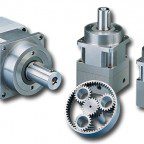Inertia affects how stepper motors turn. For example, extra steps and missed steps can happen when a system has inertia mismatch — as detailed in FAQ: How do stepper motors handle inertia mismatch? Another source of missed steps is the motor inertia itself.
The motor-shaft inertia is one culprit. This shaft rotates and has a natural tendency to keep rotating even when the motor stops. So if the controls stop the motor suddenly, the shaft may continue to rotate for a few more steps until it comes to a complete stop. This is undesirable behavior.

Ramping the motor’s acceleration and deceleration profile is one way to prevent the problem — read FAQ: What are the requirements for a stepper motor during acceleration? Stopping the stepper motor more gradually lets the shaft’s inertia stop rotating in a controllable way.
Tip: Always refer to a motor’s torque speed curve to ensure the system doesn’t running the stepper motor outside of its design limits. See FAQ: What is pullout torque and why is it a critical stepper motor value? for more on this. When doing design calculations, also consider deceleration time. Do not attempt to save time by stopping the motor quickly, as this will cause the motor to make extra steps.
In fact, extra steps are especially worrisome because most stepper motors run in an open loop configuration. This means that if shaft inertia causes extra steps, there’s no way of knowing.
This could mean loads moving out of place and the need to halt production to fix the problem. Closed-loop operation allows compensation for extra steps, but there’s added cost and complexity for closed-loop operation.
Another method of dealing with shaft inertia is to ensure the motor has a high holding torque. Read FAQ: What’s the difference between detent torque and holding torque in a stepper motor? for more on this. If the stepper has a high enough holding torque to overcome the shaft’s inertia, it’s possible to stop the shaft quickly and not have it lose position. Always consult motor’s documentation and the manufacturer to get setups with smooth operation. For more on this, download the PDF: Applying acceleration and deceleration profiles to bipolar stepper motors — by Jose. I. Quinones of Texas Instruments.







Leave a Reply
You must be logged in to post a comment.